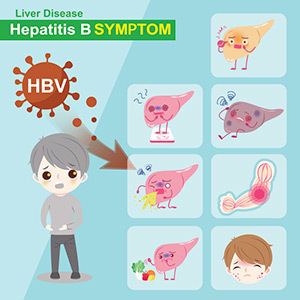
Hepatitis C, a bloodborne virus, leads to an infection of the liver that can vary significantly in severity – from a mild illness lasting a few weeks to a lifelong condition resulting in serious liver damage. Over the past few decades, the treatment of hepatitis C has undergone revolutionary changes, transforming it from a condition with limited treatment options to one that is curable in the majority of cases.
Understanding the Hepatitis C Virus (HCV)
The Hepatitis C Virus (HCV) is primarily transmitted through exposure to infected blood, which can occur through sharing needles, inadequate sterilization of medical equipment, and, less commonly, through sexual contact and from mother to baby during childbirth. Once inside the body, HCV targets the liver, leading to inflammation. Over time, chronic hepatitis C infection can cause fibrosis (scarring), cirrhosis, liver failure, and liver cancer.
Advances in Hepatitis C Treatment
In recent years, the development of direct-acting antivirals (DAAs) has revolutionized the treatment of hepatitis C, offering a cure rate of over 90% for most patients. These drugs work by directly targeting the life cycle of the hepatitis C virus, preventing it from multiplying and causing further damage to the liver. This breakthrough has significantly reduced the necessity for liver transplantation due to hepatitis C and decreased the incidence of liver cancer associated with the virus. DAAs typically involve a short course of treatment, ranging from 8 to 12 weeks, with fewer side effects compared to the previous interferon-based therapies, marking a significant milestone in the fight against this debilitating disease.
Challenges in Hepatitis C Elimination
Despite the significant advancements in treatment, the elimination of hepatitis C as a public health threat faces several challenges. Access to screening and treatment remains uneven across different regions and populations, often limited by high drug costs and a lack of infrastructure for widespread testing. Additionally, the asymptomatic nature of the disease in its early stages means that many individuals remain undiagnosed until significant liver damage has occurred. These barriers highlight the need for increased global efforts in education, testing, affordable treatments, and preventive measures to successfully combat the spread of hepatitis C.
Symptoms of Hepatitis C
Many individuals with hepatitis C may not exhibit symptoms in the early stages of the infection. When symptoms do appear, they can include fatigue, nausea, loss of appetite, jaundice (yellowing of the skin and eyes), abdominal pain, and dark urine. Because of the often silent onset, many people are unaware they are infected until liver damage begins to manifest, highlighting the importance of screening for those at risk.
Treatment of Hepatitis C
The landscape of hepatitis C treatment has been dramatically transformed with the advent of direct-acting antivirals (DAAs). These medications specifically target the hepatitis C virus, disrupting its lifecycle and ability to replicate.
- Direct-Acting Antivirals (DAAs): DAAs are now the cornerstone of hepatitis C treatment. These oral medications are typically prescribed for a course of 8 to 12 weeks, and they boast cure rates of over 90%. The choice of DAA and the length of treatment depend on the genotype of the hepatitis C virus, the presence of liver damage, prior treatment history, and other individual health factors.
- Goals of Treatment: The primary goal is to achieve a sustained virologic response (SVR), which means the virus is no longer detectable in the blood 12 weeks after completing treatment. Achieving SVR is considered a cure for hepatitis C infection.
- Preventing Transmission: While undergoing treatment, it's crucial to take steps to prevent spreading the virus to others, such as not sharing needles and practicing safe sex.
The Importance of Early Detection and Treatment
Early detection through screening is vital for individuals at risk of hepatitis C. Prompt treatment can prevent the progression of liver disease and significantly reduce the risk of liver cancer and cirrhosis. Despite the high effectiveness of DAAs, access to these medications can be hindered by cost and healthcare infrastructure challenges in some regions. Efforts are ongoing globally to improve access to these life-saving treatments.
Conclusion
The treatment of hepatitis C has made remarkable strides in recent years, offering hope and healing to those affected by the virus. With the high cure rates of DAAs, hepatitis C has shifted from being a potentially lifelong burden to a curable infection. Awareness, screening, and access to treatment are crucial in combating the hepatitis C virus and preventing long-term liver damage. Individuals who think they may be at risk should consult healthcare providers for screening and possible treatment to take advantage of these advances.
